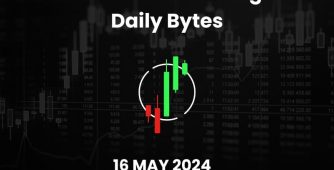It has been about two decades since academics identified a “momentum effect” in stock markets. Momentum is basically the tendency of winning stocks (i.e. stocks that have outperformed the market in recent times) to keep winning and losing stocks to keep losing.
At the core, momentum investing calls for investors to “Buy High, Sell Higher.”
It is based on the idea that once a stock establishes a trend, it is more likely to continue in that direction instead of moving against the drift. Unlike the hugely-followed Value or Growth styles, this strategy has barely anything to do with the fundamentals of a company, and instead works with the human penchant to extrapolate the flimsiest trends into the future.
Momentum versus Other Styles
It is worth reflecting over how the momentum strategy compares to the other styles of investing over time. Recent research indicates that the size premium for small-cap stocks has shrunk dramatically since the 1980s and value premium has also declined radically since the 1990s. Academics are of the opinion that once research on factor premiums (like size and value) become known to public, the investment world catches on and the premium gradually erodes.
However, unlike other investment styles, momentum premium has stood the test of time, remaining remarkably robust ever since it was identified by financial academics in the 1990s.
Why Does Momentum Strategy Work?
There is a simple reason to this. It works because we are humans!
There’s a whole laundry list of behavioral biases that most investors exhibit, and these emotional responses and mistakes are the very reason that momentum strategy works. For instance, we all know of investors who are afraid to book losses, and hence hold onto losing stocks for too long, hoping that they will spring back to their previous highs. On the other hand, investors sell their winners way too early.
Furthermore, investors initially tend to under-react to news, events or data releases. However, once things become clear, they tend to go with the herd and overreact, causing dramatic price reactions.
These behavioral issues extend trends, and thus open up a huge opportunity for momentum players to make profits. So basically, it’s a way to profit from the general human tendency to extrapolate current trends into the future.
Momentum investing is based on that gap in time that exists before the mean reversion occurs, i.e. before prices become rational again.
Chase the Alpha
Momentum strategies have been known to be alpha-generative over long periods of time and across markets. So obviously, this strategy is quite tricky to implement, as detecting these trends is no mean feat.
Here, we have created a strategy that will help investors get in on these fast movers and make handsome gains. Our screen will help you to rake in gains from both long-term price momentum and a short-term pullback in price, which would reflect some profit-taking in the stock.
Screening Parameters
Percentage Change Price (52 Weeks) = Top #50: This item selects the top 50 stocks with the best percentage price change over the last 52 weeks. This parameter ensures that we get stocks that have appreciated the most over the past one year.
Percentage Change in Price (1 Week) = Bottom #10: From the top 50 stocks, we choose those that are among the 10 worst performers over a short one-week period.
Zacks Rank #1: No matter what the market conditions are, stocks with a Zacks Rank #1 (Strong Buy) have a proven history of outperformance.
MomentumStyle Score of B or better: A top Momentum Style Score knocks out a lot of the screening process as it takes into account several factors including volume change and performance relative to its peers. It indicates when the timing is best to invest in a stock and take advantage of its momentum with the highest probability of success. Stocks with a Momentum Style Score of ‘A’ or ‘B,’ when combined with a Zacks Rank #1 (Strong Buy) or #2 (Buy), handily outperform others.
Current Price greater than $5: The stocks must all be trading at a minimum of $5.
Market Capitalization = Top #3000: We have chosen stocks that are among the top 3000 in terms of market value, to ensure strong liquidity.
Average 20-Day Volume greater than 100,000: A substantial trading volume ensures that these stocks are easily tradable.






